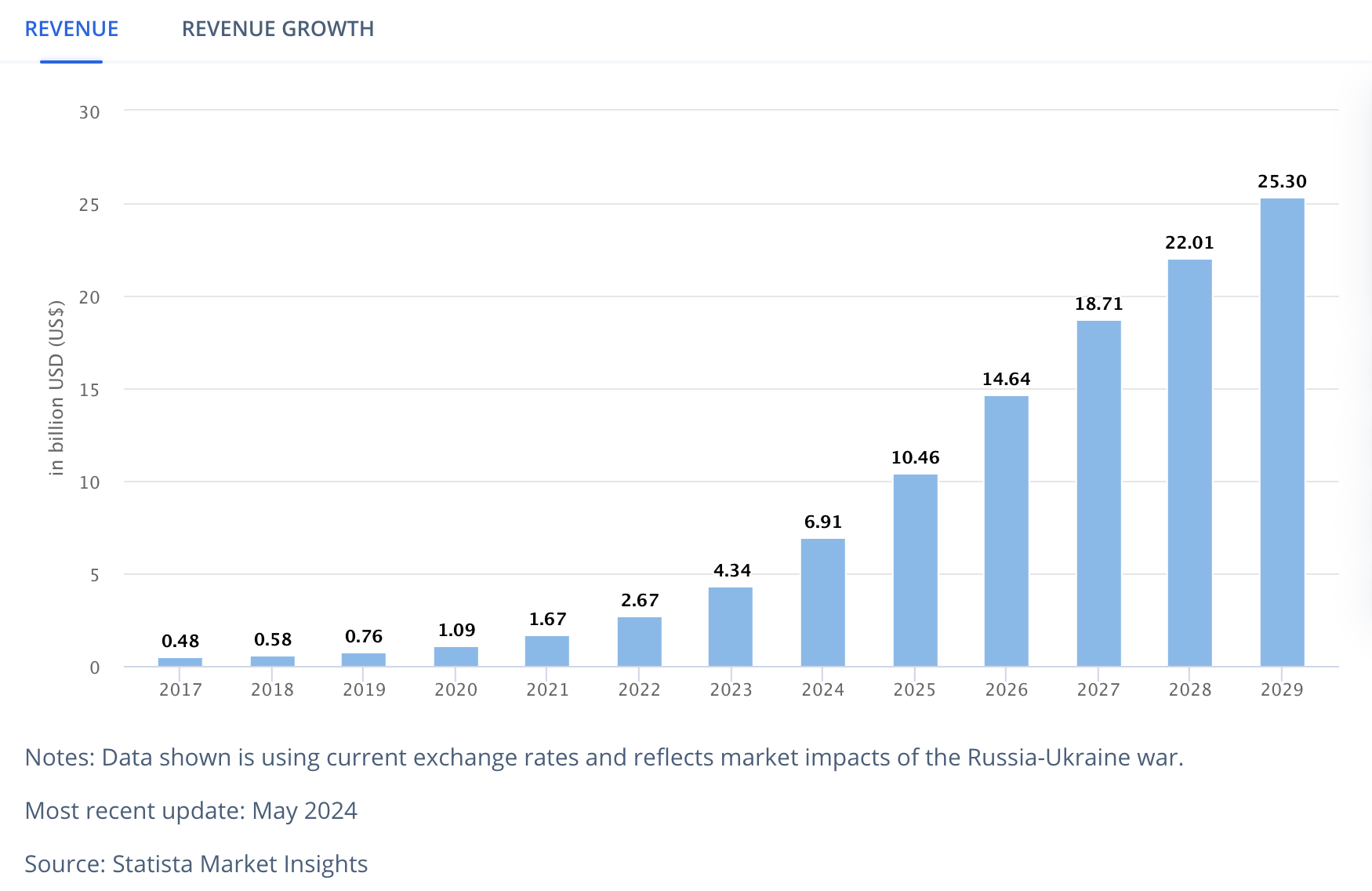Video gaming is one of the favorite forms of entertainment for millennials, Gen-Zs, and Gen Alpha. However, graphic-intensive video games require high-end devices that are not accessible to everyone.
Cloud gaming emerges as a solution. Designed to transcend traditional hardware boundaries, it offers a glimpse into a future of gaming, unshackled by physical limitations.
SponsoredHow DePin Solves the Challenges of Cloud Gaming
The allure of cloud gaming lies in its promise to deliver high-quality gaming experiences without expensive consoles or PCs. Users can stream games directly from remote servers, enabling play from any device, anywhere.
Moreover, Statista forecasts that the cloud gaming market will surge at a CAGR of 29.64% in the next five years. Consequently, its revenue is predicted to hit $25.30 billion by 2030.
Read more: 7 Best Cloud Gaming Services in 2024

Despite its advantages, internet service quality and the physical distance from centralized data centers significantly impact the cloud gaming model. This often results in lag and interrupted gameplay.
Sponsored“Cloud gaming faces significant infrastructure challenges compared to using a dedicated console/ device, including dependence on stable internet, high latency, internet traffic congestion, and data caps. These issues limit cloud gaming’s usability and innovation,” Web3 researcher Eli5DeFi explained.
According to Eli5DeFi, DePin (Decentralized Physical Infrastructure Network) introduces solutions poised to redefine cloud gaming through edge computing technologies. By processing data closer to the user, edge computing reduces latency and enhances the responsiveness of cloud gaming platforms. The DePIN architecture leverages a distributed network of edge computing devices, providing local data handling, real-time analysis, and low-latency operations essential for seamless gaming experiences.
Eli5DeFi shared an example of Aethir’s “Aethir Edge,” an enterprise-grade edge artificial intelligence (AI) device. This device is a cornerstone of Aethir’s 3-Layer DePin Architecture and plays a critical role in the edge layer by bringing high-end, localized computation to life.
With Aethir Edge, games that once required substantial hardware can now run with console-quality graphics and minimal latency on mobile devices. Finally, it enhances gaming accessibility and engagement.
Read more: What Is DePIN (Decentralized Physical Infrastructure Networks)?
Beyond Aethir, other companies in the DePIN ecosystem, such as Flux, are also making significant strides. Flux collaborates with YOM, a decentralized pixel streaming infrastructure, to optimize cloud gaming services.
YOM leverages DePIN to provide high-performance, low-latency gaming experiences, offering a decentralized alternative to traditional gaming consoles. Their partnership with Flux scales GPU resources to handle graphically intensive games and ensure peak performance across global regions.
Meanwhile, DePIN’s influence on the gaming industry could be even broader. Prominent industry experts think it may revolutionize how players interact with both digital and physical environments.
“I see an exciting intersection between DePIN and location-based services (LBS) in games. Imagine a network of physical venues hosting in-game events and challenges, or players creating, planting and discovering artifacts in real-world locations. This fusion enhances the gaming experience by blending physical and digital worlds, opening up new possibilities for interactive and immersive gameplay,” Alex Casassovici, Azarus CEO & Founder, told BeInCrypto.

